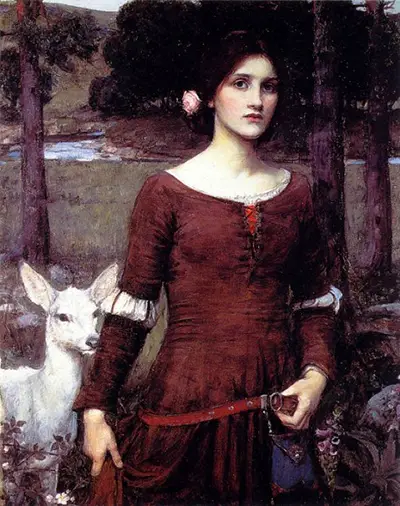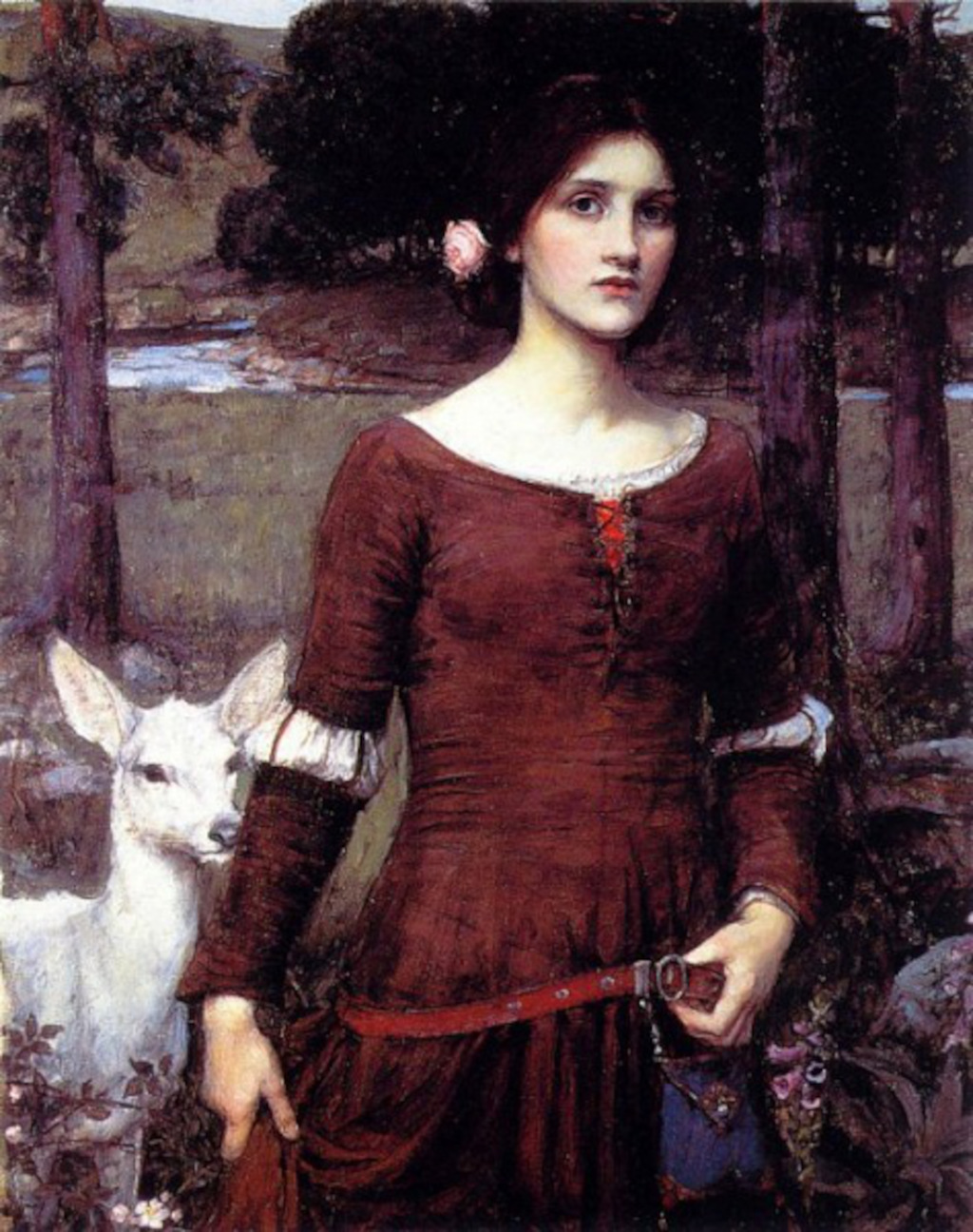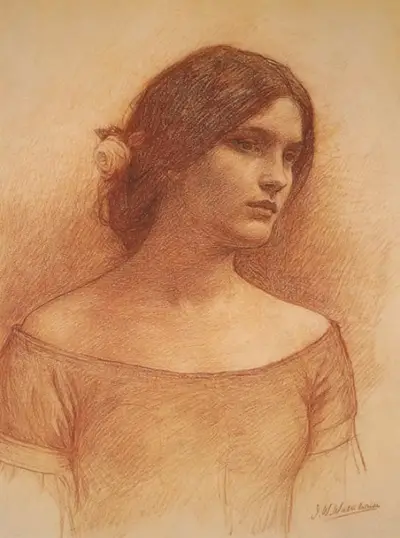Introduction
The artist paid particular attention to the facial features of the model despite having a great wealth of talent and experience in portraiture. Through comparison of the drawings with the final painting, you will be able to understand some of the elements of the process undertaken by Waterhouse, including amendments that he made prior to beginning this complex piece. The scene is inspired by a Tennyson poem, as with many of his paintings at this time.
The ballad was published in 1842 and tackles subjects such as romance, marriage and class. Waterhouse would sometimes produce multiple compositions from a single poem though he also took in ancient mythology in other pieces. He was a well-read artist who created his own style, whilst drawing in many influences from other artists.
Waterhouse built up a strong following for his work over time, but in later life this interest would start to wain. Abstract art started become more fashionable and for a number of decades artists such as Waterhouse would be forgotten. It was then fairly recently that this approach became fashionable once more.
The Story
Lady Clare is told of her true parentage and is unsure whether or not to reveal this to her betroved, who is now from a much higher class than her. Class remains a highly significant element of British society in the present day but was even more significant during Victorian times.
Description
The artist features some beautiful detail on the model's dress, with flared sleeves, a thin belt with metalwork and a light undergarment which is displayed around the neckline.
He completes the look of innocence with a small flower in her hair and would always add colour to the cheeks to continue the feeling of beauty, charm and purity. Pale skin was common for all of his models, many of whom he used on several occassions.
A sweet lamb wanders behind Lady Clare, whilst a free-flowing river meanders in the background. Dark bushes block out most of the right hand side of the painting, leaving just a small window of bright sky to show through. The female figure, slim and young, stares directly at us, whilst wearing a flower head in her hair.
A closer inspection also reveals plumed touches around her elbows in white, but her clothing is relatively simple and understated. Waterhouse wanted here to create an image of a natural beauty, but someone who was not seeking great attention and dressed appropriately. The artist typically portrayed his models in this innocent, pure image.
Large Images of The Lady Claire and a Study Drawing
See below for a larger image of the original painting, as well as an example of a study that Waterhouse produced whilst preparing for the final painting. The use of a British-style landscape in the background, with green grass and a plethora of trees was typical of the artist and continued into many other artworks from his career.
It is worth comparing the study with the final work, to recognise the same model but also to consider what changes the artist made at a later date. The clothing and flower in her hair remain, but Waterhouse chose to alter the angle of her gaze, perhaps in order to bring a greater connection with the audience.



